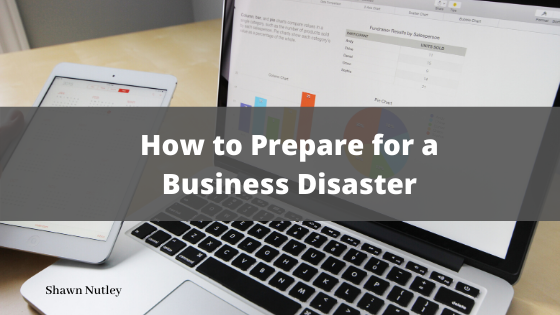Flooding, landslides, fires, and many other unexpected disasters can disrupt or entirely halt your business.
While there are insurance policies available to mitigate damages and help recovery, you can bring in your own survival options to stay agile and even learn from the disasters. Reducing damages and making insurance less of a dire need is key.
Here are a few business disaster planning points to keep in mind.
Power Failure Planning
Modern power failure plans need a way to mitigate failure, then jump into recovery as soon as possible.
Think about the moment you lose power. Do your vital systems have backup power options? Do you have a way to keep computers on at least long enough to save information and shut down safety?
For computer systems, an Uninterruptible Power Supply (UPS) gives you extra time to save and shutdown. The most basic UPS is a battery with a timer showing how much time you have left with current power consumption.
Larger battery systems can switch on when power is lost, but there are limits. High power consumption systems such as industrial machinery may demand more electricity than the battery systems can handle.
Internet connectivity is also not covered for most businesses. Unless you are an Internet Service Provider (ISP), having power to your router and devices won’t matter if the ISP is also experiencing an outage.
The internet issue can be mitigated by having another method of connecting to the internet, such as satellite or mobile connectivity. Look to 5G connectivity in the future, but be aware that weather may slow or interrupt wireless communications.
Data Backup Planning
What happens when your data systems are damaged? What if your computers are infected and all of your data is lost?
Whether your business is damaged by a natural disaster or attacked by hackers, you need a way to keep up productivity and get started again quickly. Backups are the way.
By using data backups, you can keep a copy of your production data in safe locations across the country or across the world. You can make local copies of your devices for quick backup and recovery access, but remote backups are smarter choices.
The most basic disaster backup plan is to choose a data center in a geographically different location. This reduces the chance that a single disaster will ruin your live and backup data at the same time.
If you choose cloud storage for backups, your business can also operate on the cloud. If the disaster isn’t cleared up within a reasonable amount of time–months or longer–it’s fair to shift business to another location or access data from home.
For more information on disaster planning for businesses, contact a business disaster planning and contingency professional.

